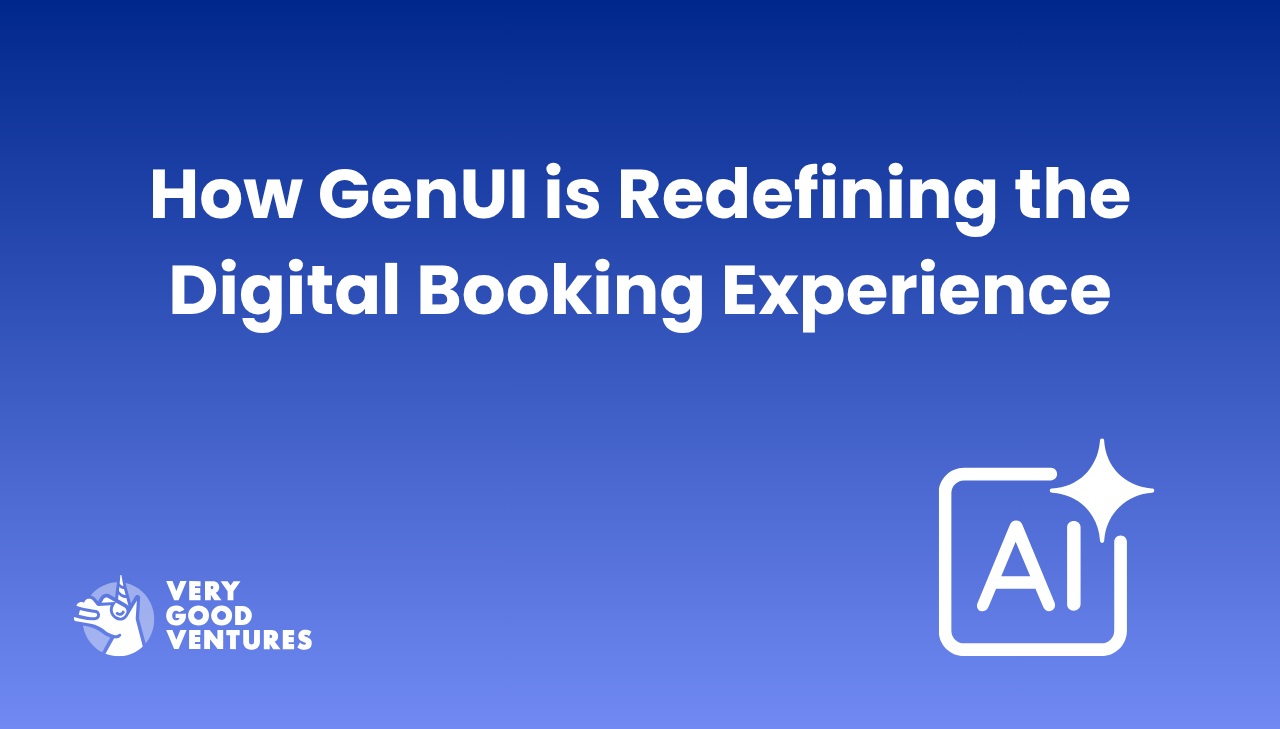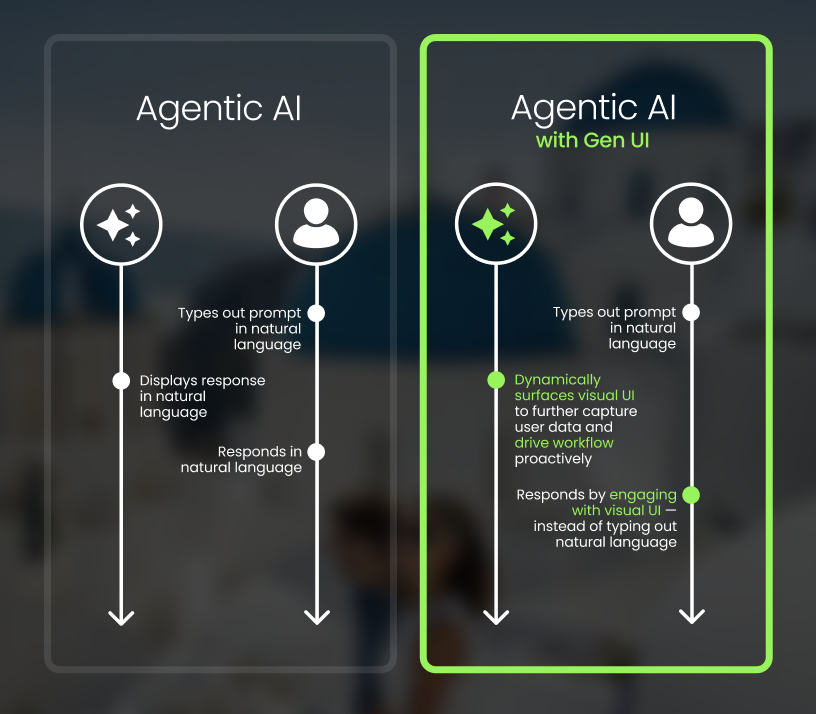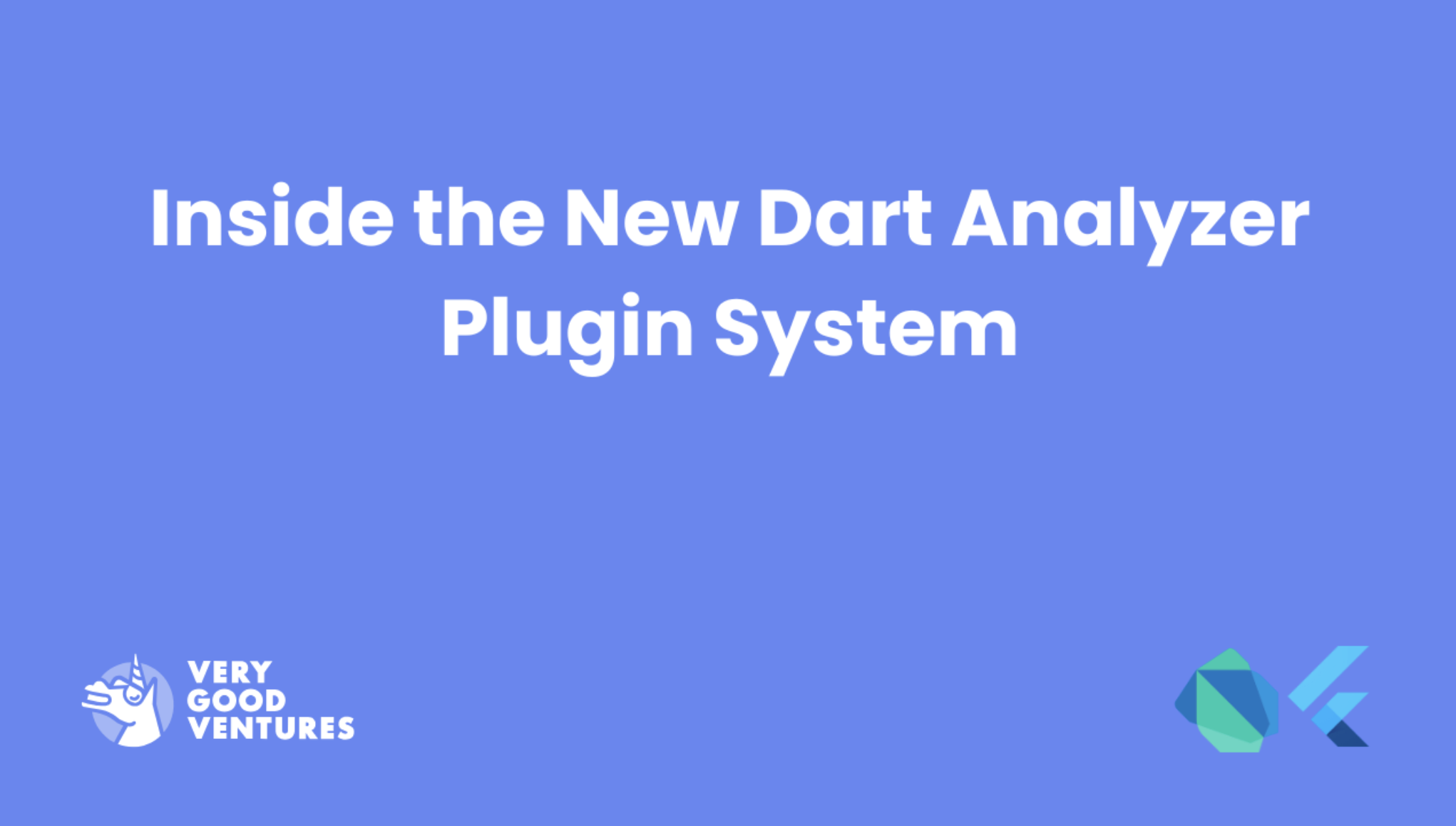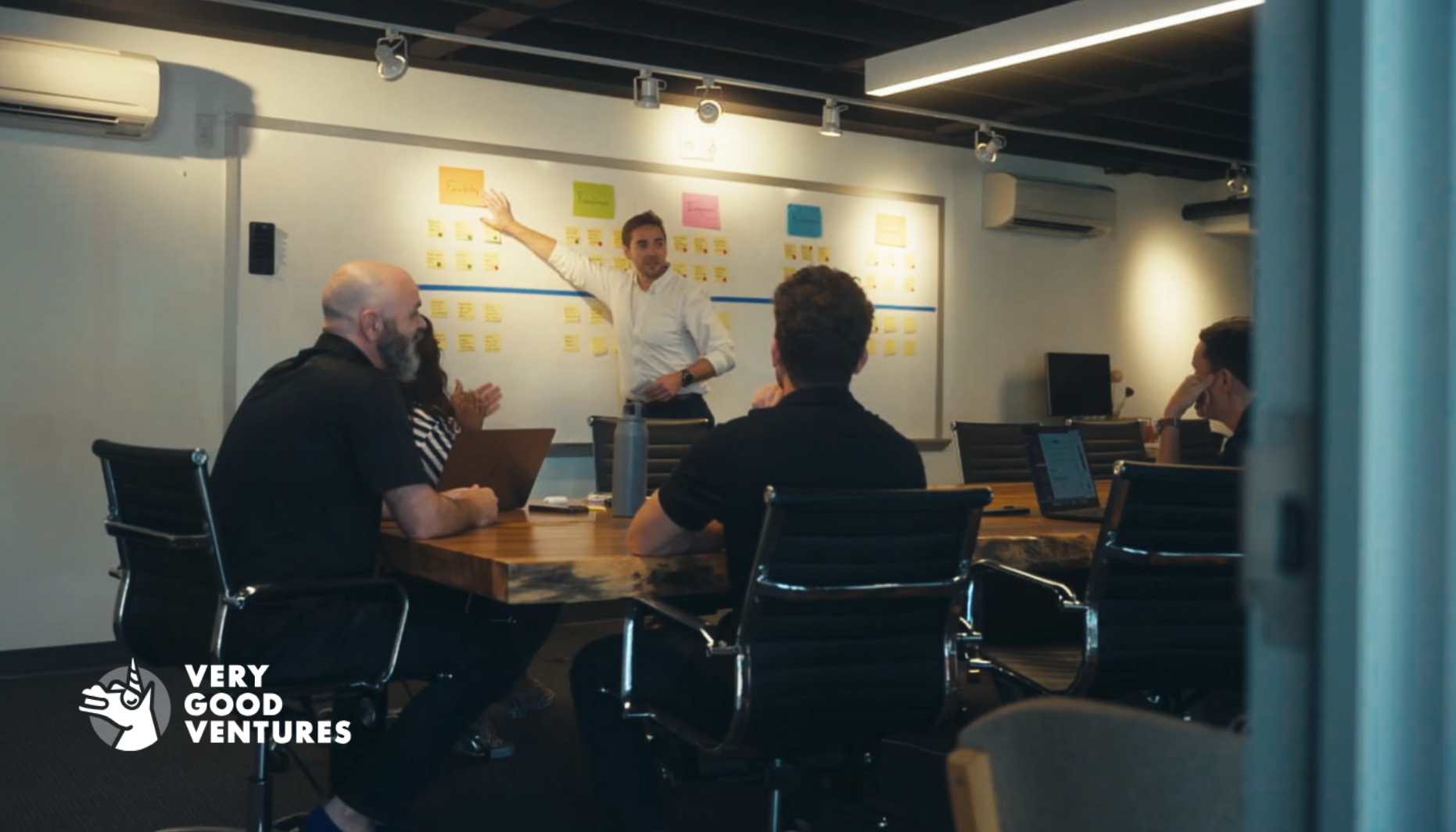Generative UI for Flutter: Build Adaptive, Branded, and Intelligent User Experiences
How Google’s Generative UI SDK for Flutter enables experiences powered by AI and Flutter, transforming customer interactions into seamless, personalized journeys.

Customers trying to book services digitally have traditionally only been offered multi-step forms or text-based chatbots. These solutions work, but users often find themselves clicking endlessly and abandoning their purchase flow altogether. Today, a new frontier is emerging: Generative UI SDK for Flutter (flutter_genui), which blends agentic AI with Flutter’s rendering power to dynamically assemble interfaces.
The Next Leap in Digital Experiences: What is Generative UI?
GenUI represents the evolution of conversational and branded interfaces. Instead of relying solely on text prompts, GenUI dynamically assembles visual interfaces like dropdowns, sliders, and card selectors that adapt in real time to user intent. The result is a more natural, branded, and personalized interaction.

Let’s explore how this works in a real-world scenario:
.png)
On the left, traditional AI delivers static, text-based responses, describing results but requiring users to manually take the next step.
On the right, GenUI transforms AI intent into live, interactive components that guide users through dynamic, personalized experiences.
GenUI SDK for Business
GenUI is a business advantage—by moving beyond boring chatbot interfaces, enterprises can create booking and engagement experiences that are faster, more intuitive, and deeply personalized to each user. Instead of forcing customers through rigid forms or endless chat prompts, GenUI guides them with adaptive, branded interfaces that feel natural and reduce friction.
Here's how we believe it drives measurable value:
- Faster Goal Completion: Streamlined, guided interactions reduce drop-off and cognitive load.
- Stronger Engagement: Tailored elements are more inviting than basic text, driving greater customer interaction.
- Smarter Personalization: Every UI adapts in real time to context, preferences, and behavior, ensuring customers feel understood and supported.
For booking journeys, GenUI enhances the experience by reducing friction across key stages—such as discovery, consideration, decision-making, and re-engagement. Instead of relying solely on static forms or text prompts, GenUI introduces adaptive, visual components that guide users more naturally through options, preferences, and upsell opportunities.
While certain steps can remain in traditional web flows, GenUI gives teams the flexibility to bring as much of the booking journey as they choose into the agent interface, including payments, for a more seamless end-to-end experience. This shift enables customers to explore and act within a single, cohesive experience, fostering stronger engagement and satisfaction over time.
Introducing Generative UI SDK for Flutter
Unlike traditional chatbots, the SDK goes beyond handling basic text prompts. It dynamically generates adaptive, visual UI components—such as dropdowns, sliders, or card selectors—that respond to user intent in real time. Its modular architecture decouples AI logic, UI rendering, and backend integration, enabling scalable, cross-platform deployments. The result is a flexible, branded, and personalized customer experience that can integrate seamlessly with existing systems.
Implementation Paths
Every organization approaches GenUI from a different starting point. Some products are already built with Flutter, while others rely on web or native stacks like React, Vue, or iOS/Android. Both can take advantage of the Flutter GenUI SDK—the implementation path just looks a little different.
Flutter-Native Products
For products already built in Flutter (mobile or web), integration is faster and more seamless. Teams can leverage existing components, styling systems, and libraries while aligning directly with Google’s GenUI SDK. This option enables quicker delivery, reduced integration complexity, and strong continuity with the current codebase, making it ideal for rapid pilots or production-ready features.
Non-Flutter Products
For platforms not originally built with Flutter, the GenUI SDK can still be integrated using Flutter’s Add-to-App feature or through multi-platform approaches, including React, Vue, or native mobile frameworks. This allows teams to embed GenUI experiences without rewriting entire apps. In non-Flutter environments, integration involves implementing compatible UI components aligned with the design system and ensuring backend orchestration. While this approach adds some initial implementation and maintenance overhead, it enables teams to deliver the same branded, intelligent booking experience powered by GenUI—without requiring a full Flutter migration.
Regardless of approach, both integration paths aim to deliver the same result: a seamless, branded, and intelligent experience powered by GenUI. You can talk to our team to explore which GenUI implementation path best aligns with your goals and technical ecosystem.
The Future of Customer-Facing Agents
Generative UI is more than a new feature—it’s a paradigm shift. By combining agentic AI with adaptive, visual UI components, enterprises can reimagine how customers book, buy, and interact with their services. Whether implemented as a rapid prototype in Flutter or natively integrated into an existing stack, the opportunity is the same: boost engagement, increase conversions, and future-proof digital experiences.
Ready to Explore GenUI For Your Business?
Generative UI represents a new way to think about digital experiences. From rapid prototyping with Flutter to deep alignment with your existing tech stack, we’ll help you determine the best path forward. At VGV, our team combines deep Flutter expertise, AI-driven design, and scalable architecture practices to bring GenUI to life.
Learn more about how GenUI can elevate your digital customer experience.
Insights from Our Experts

Creating Your First Dart Analyzer Plugin with the New Plugin System
Lorem ipsum dolor sit amet, consectetur adipiscing elit. Suspendisse varius enim in eros elementum tristique. Duis cursus, mi quis viverra ornare, eros dolor interdum nulla, ut commodo diam libero vitae erat. Aenean faucibus nibh et justo cursus id rutrum lorem imperdiet. Nunc ut sem vitae risus tristique posuere.

How We Efficiently Onboard Engineers at Very Good Ventures
Lorem ipsum dolor sit amet, consectetur adipiscing elit. Suspendisse varius enim in eros elementum tristique. Duis cursus, mi quis viverra ornare, eros dolor interdum nulla, ut commodo diam libero vitae erat. Aenean faucibus nibh et justo cursus id rutrum lorem imperdiet. Nunc ut sem vitae risus tristique posuere.

From Code to Community: How puf Inspires More People to Build More Apps
Lorem ipsum dolor sit amet, consectetur adipiscing elit. Suspendisse varius enim in eros elementum tristique. Duis cursus, mi quis viverra ornare, eros dolor interdum nulla, ut commodo diam libero vitae erat. Aenean faucibus nibh et justo cursus id rutrum lorem imperdiet. Nunc ut sem vitae risus tristique posuere.



